Almost every month during our monthly photo contest, we receive at least one turtle photo submission. There is just something about seeing a group of turtles basking in the sun or lounging in shallow water that makes visitors to the Park so happy. So, we took the liberty of giving the people what they want. Here are the top five turtles you can find on and around the towpath.
Red-Eared Slider
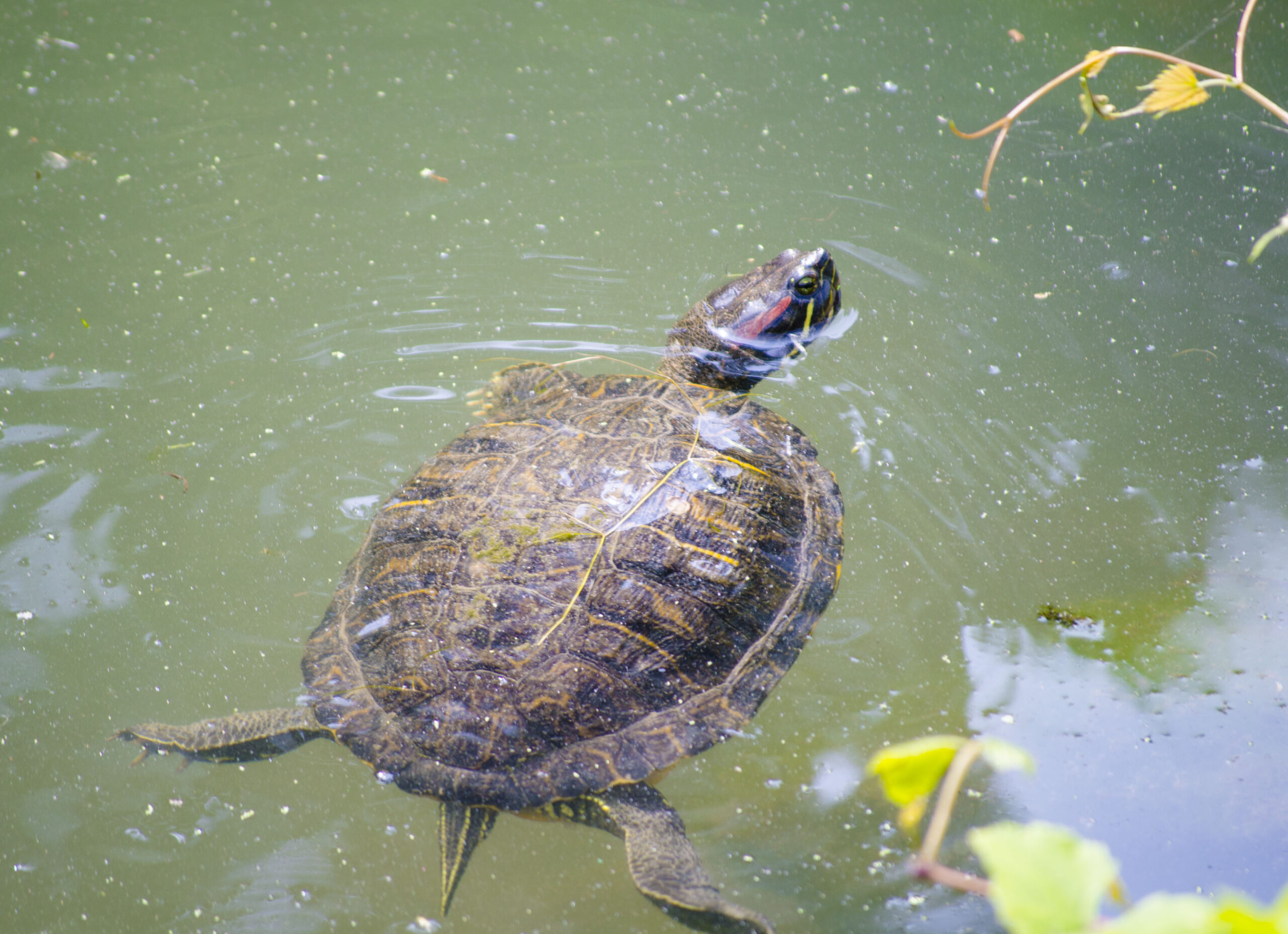
Red-Eared Slider – Williamsport by Ellen Kinzer
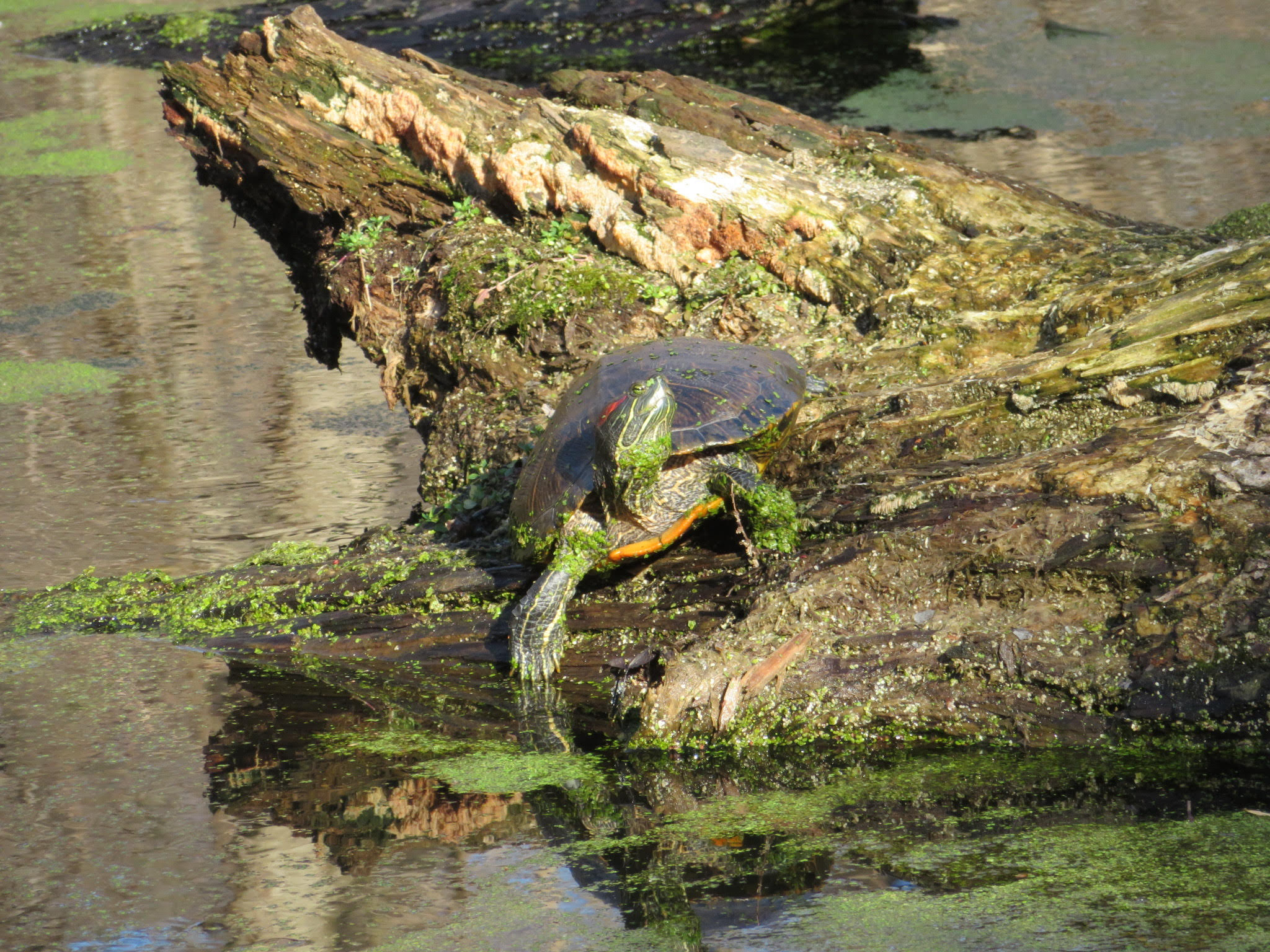
Basking Turtle (Red-Eared Slider) – outside Brunswick, near milepost 57 by Sue Roosma
You can identify the Red-Eared Slider by the bright red strip alongside its face (hence, where the name of this turtle originates) and by the bright green striped legs that pop out of its shell. These turtles get the name slider for the mere fact that upon a potential threat, they “slide” off rocks or logs and gracefully land in the water. These turtles are considered invasive and very often are sold as pets. **It is important to note that if you come across a Red-Eared Slider, you are not permitted to remove the animal from its habitat.**
For more information about this species, visit the link here.
Eastern Box Turtle
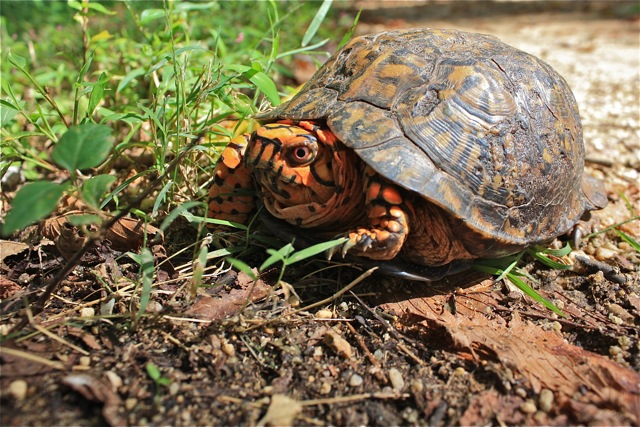
Eastern Box Turtle by Maureen Lemire

Eastern Box Turtle by Michael Mitchell
You will know you have spotted an Eastern Box Turtle by the distinctive shell coloring with patterns of bright red, orange, and yellow. Often, these turtles are found along the towpath as this species of turtle prefers hanging out in moist forested areas. So, be on the look out bikers! These little guys like to hide in heavily trafficked areas. If you find these turtles during your visit, don’t assume they need to be placed in water; this could be potentially hazardous to the Eastern Box Turtle and cause drowning.
Visit this website for more fun facts, (such as when the Eastern Box Turtle hibernates) here.
Wood Turtle
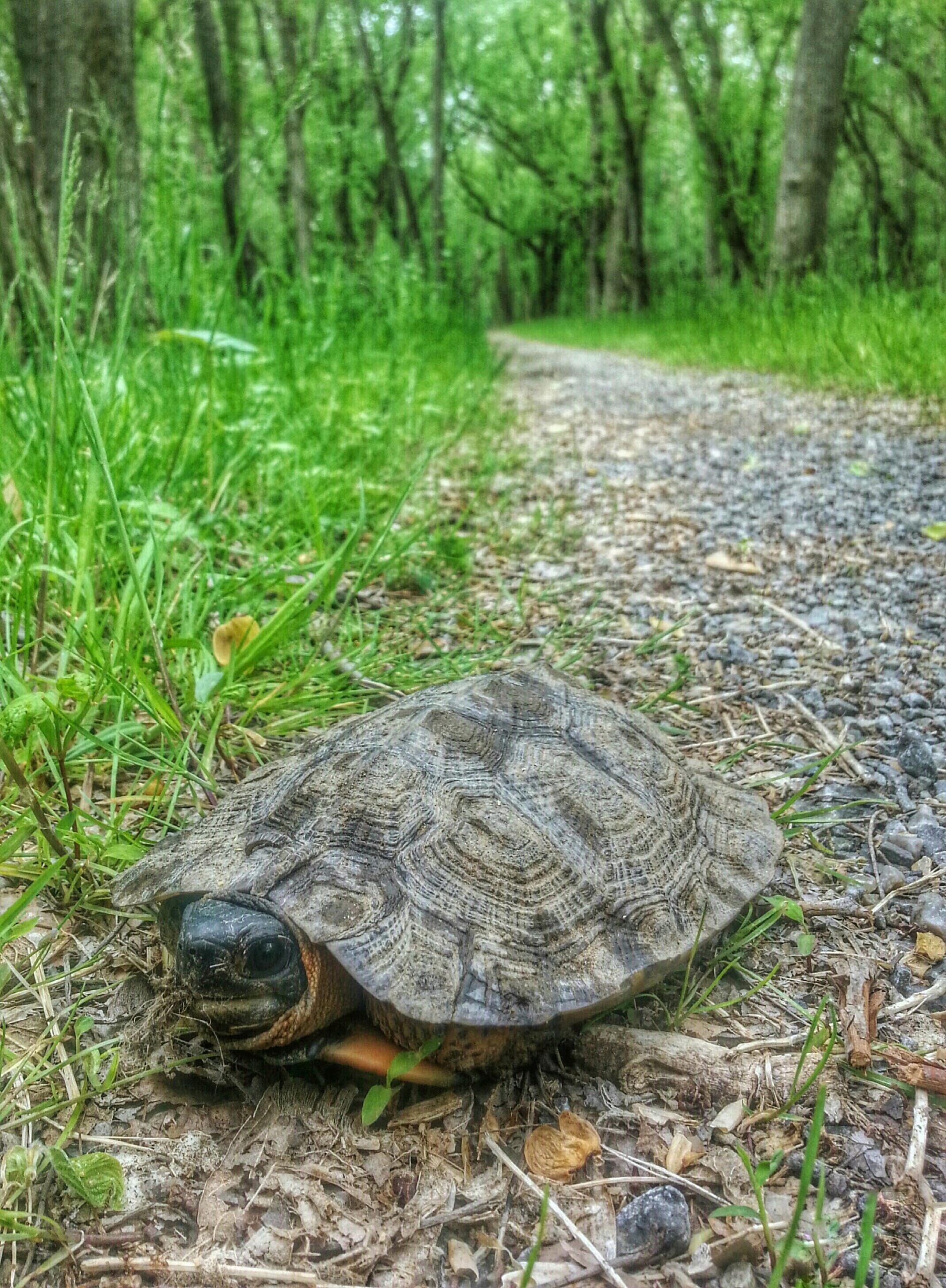
Wood Turtle on the Towpath by Eric Reed
Wood Turtles are quite a rare occurrence in the Park, only because their populations have dwindled so much that they are considered an endangered species. Male Wood Turtles can be quite aggressive and they will fight to mate with females. Wood Turtles have a social hierarchy in which the smaller turtles fall in line behind the largest Wood Turtles.
Read here for fun facts about Wood Turtles.
Eastern Painted Turtle
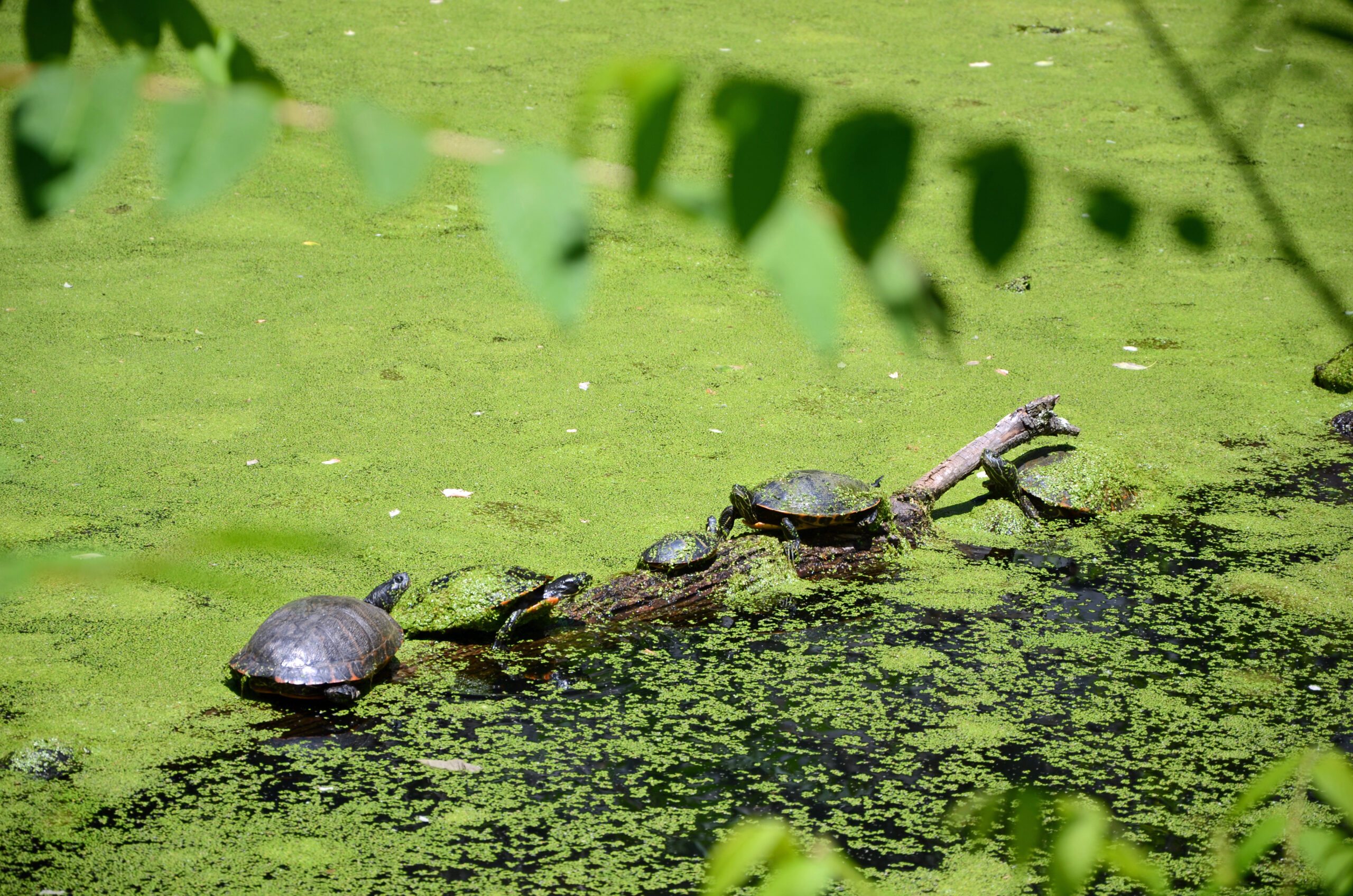
Eastern Painted Turtles near Harpers Ferry by Jamie Boden-Johnson
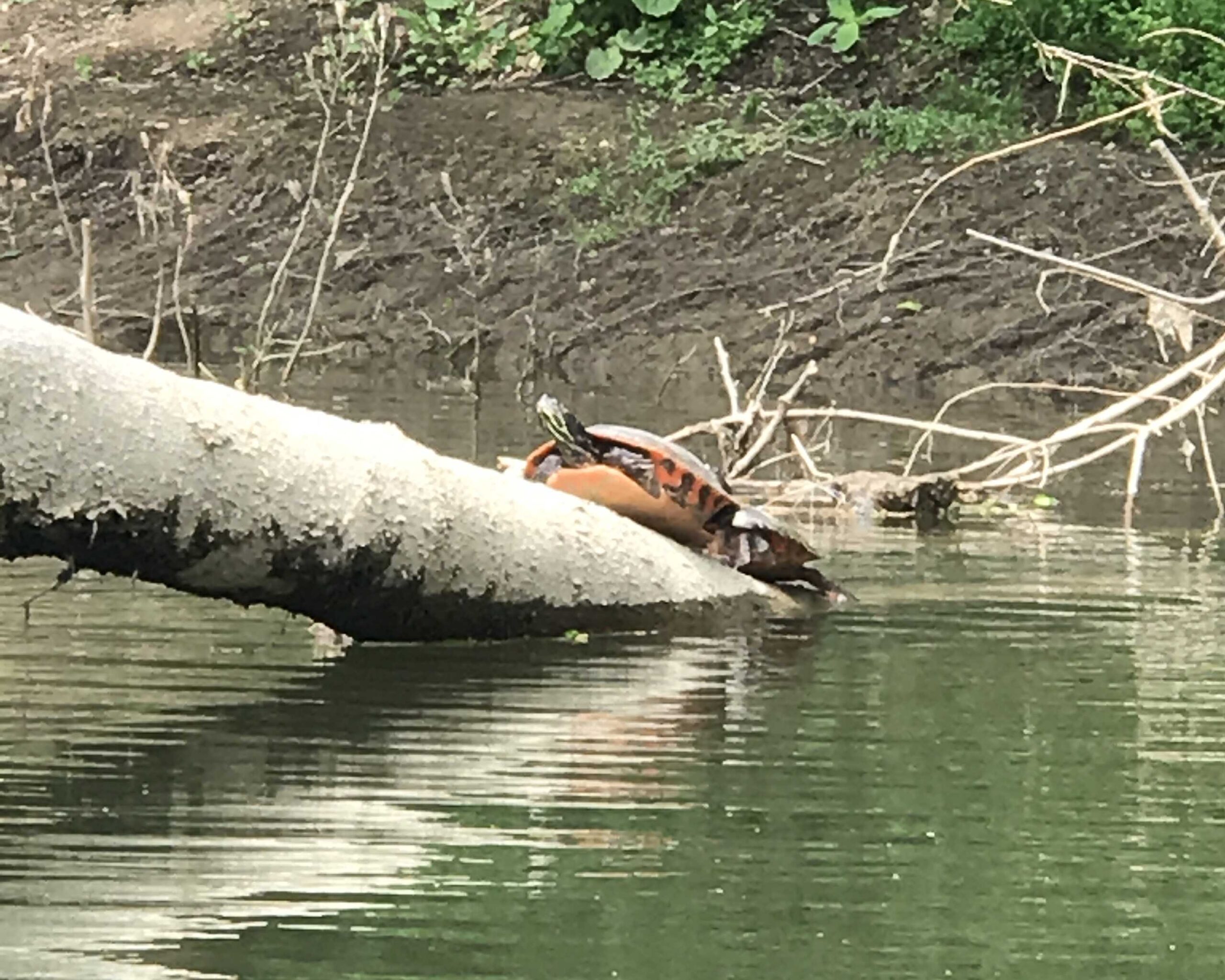
Eastern Painted Turtle on the Tree Trunk by Lori Sprecher
The Eastern Painted Turtle can usually be found basking on logs and rocks in the sun with large groups. This species just loves social gatherings! Eastern Painted Turtles are more common in the U.S. and are most likely what you shall see when you visit the more marshy areas of the Park.
Want more info on these sun-loving dudes, visit the link here.
Snapping Turtle
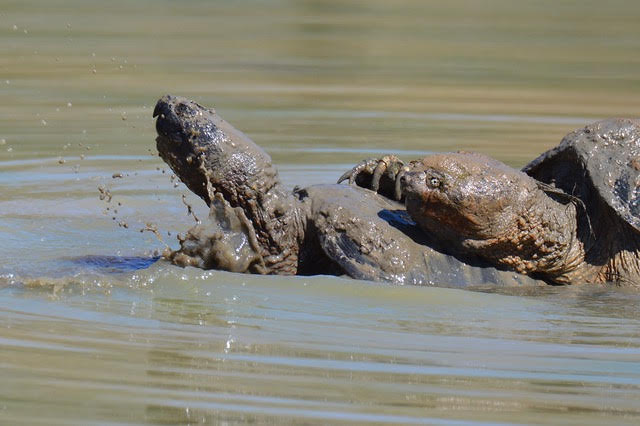
Snapper Turtles not social distancing 2-mile 20 by Maureen Lemire
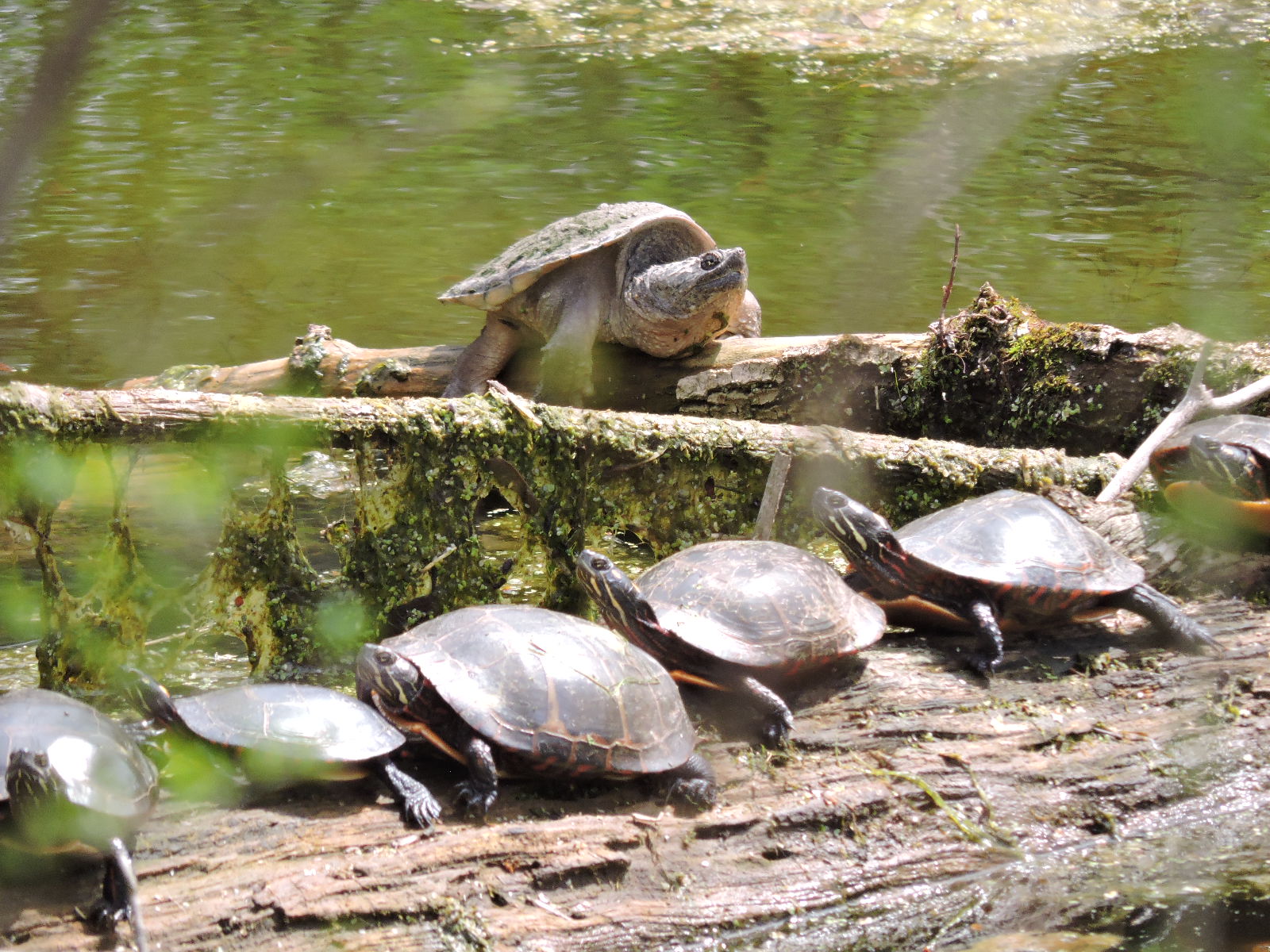
Snapper Watching Group of Eastern Painted Turtles – Hancock, MD by Carol Shaffer
You do not want to corner these big boys. The Snapping Turtle can be aggressive and they are huge, ranging from 8 to 14 inches. Snapping Turtles are not interested in sunbathing, but are more likely seen swimming and catching a meal.
More information can be found here.





